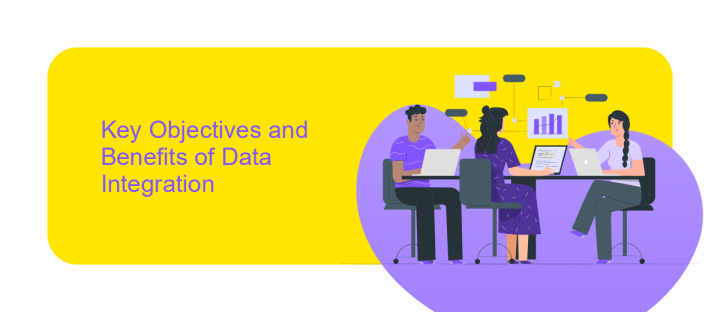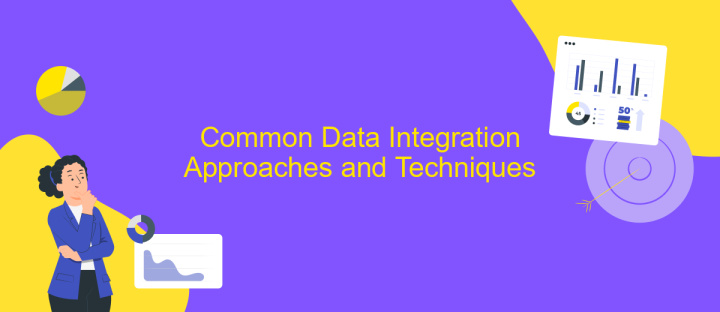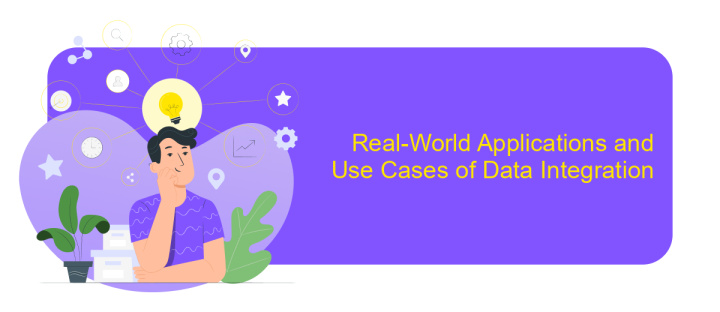Data Integration Purpose
Data integration is a critical process that enables organizations to combine data from different sources into a unified view. This process ensures that data is consistent, accurate, and accessible, facilitating informed decision-making and enhancing operational efficiency. By breaking down data silos, data integration helps businesses gain valuable insights, improve collaboration, and drive innovation, ultimately leading to a more competitive and agile organization.
Understanding Data Integration: Bridging the Information Gap
Data integration is a crucial process in modern organizations, aiming to consolidate diverse data sources into a unified view. This process helps in overcoming the challenges posed by disparate data systems, enabling seamless access and analysis. By bridging the information gap, data integration enhances decision-making capabilities, providing a comprehensive understanding of organizational data. It ensures consistency and accuracy, which are vital for operational efficiency and strategic planning.
- Combines data from multiple sources into a single, coherent dataset.
- Facilitates data consistency and reduces redundancy.
- Enhances data quality and ensures accuracy across systems.
- Enables real-time data access for timely decision-making.
- Supports compliance with data governance and regulatory requirements.
Effective data integration is essential for organizations seeking to leverage their data assets fully. By bridging the information gap, businesses can unlock insights that drive innovation and competitive advantage. This integration not only streamlines operations but also empowers organizations to respond swiftly to market changes and customer needs. As data continues to grow in volume and complexity, the importance of robust data integration strategies will only increase, making it a cornerstone of successful data management.
Key Objectives and Benefits of Data Integration

Data integration serves as a cornerstone for businesses aiming to harness the full potential of their data. One key objective is to consolidate disparate data sources into a unified view, enabling more informed decision-making. By integrating data, organizations can eliminate silos, ensuring that all departments have access to the same, up-to-date information. This leads to increased operational efficiency as teams can collaborate more effectively, reducing redundancy and errors. Furthermore, data integration supports scalability, allowing businesses to seamlessly incorporate new data sources as they grow.
Another significant benefit of data integration is enhanced data quality. By harmonizing data from various sources, organizations can identify and rectify inconsistencies, leading to more accurate insights. Services like ApiX-Drive facilitate this process by offering easy-to-use tools that automate the integration of multiple applications and data platforms. This not only saves time but also reduces the technical burden on IT teams. Ultimately, data integration empowers businesses to deliver better customer experiences, as they can tailor services and products based on comprehensive and reliable data insights.
Common Data Integration Approaches and Techniques

Data integration is a crucial aspect of modern data management, enabling organizations to consolidate information from diverse sources into a unified view. This process is essential for achieving accurate insights and informed decision-making. Several common approaches and techniques have emerged to facilitate effective data integration.
- ETL (Extract, Transform, Load): This traditional method involves extracting data from various sources, transforming it into a consistent format, and loading it into a target database.
- ELT (Extract, Load, Transform): Unlike ETL, this approach loads data into a target system first, then transforms it, leveraging the processing power of modern databases.
- Data Virtualization: This technique allows real-time data access without physical consolidation, providing a virtual view of integrated data.
- API Integration: APIs enable different systems to communicate and share data seamlessly, promoting integration across platforms.
These techniques offer varied benefits and can be selected based on specific organizational needs and infrastructure. By implementing the right approach, businesses can ensure data consistency, improve accessibility, and enhance overall data quality, ultimately driving better strategic outcomes.
Real-World Applications and Use Cases of Data Integration

Data integration plays a crucial role in modern business operations by enabling seamless access to consolidated information from multiple sources. This capability is essential for organizations aiming to enhance decision-making processes, improve efficiency, and gain a competitive edge. By integrating data, companies can create a unified view of their operations, leading to more informed strategic decisions.
In the healthcare sector, data integration is vital for creating comprehensive patient records, facilitating better diagnosis and treatment plans. Similarly, in finance, integrating data from various sources allows for accurate risk assessments and fraud detection. The retail industry benefits from data integration by gaining insights into customer behavior, optimizing inventory management, and personalizing marketing strategies.
- Enhanced customer experiences through personalized services.
- Streamlined supply chain management and logistics.
- Improved regulatory compliance and reporting accuracy.
- Facilitated mergers and acquisitions by harmonizing data systems.
As technology continues to evolve, the importance of data integration will only grow, driving innovation across industries. By leveraging integrated data, organizations can unlock new opportunities, reduce operational costs, and deliver value to stakeholders. The ability to harness the power of data integration will be a defining factor for success in the digital age.


Challenges and Best Practices in Data Integration
Data integration presents several challenges, primarily due to the diverse nature of data sources and formats. One significant hurdle is ensuring data quality and consistency across various systems. Disparate data formats and structures can lead to discrepancies, making it difficult to achieve a unified view. Additionally, managing data security and privacy is crucial, as integrating data often involves sensitive information. Organizations must also address scalability issues, ensuring that their integration solutions can handle increasing data volumes without compromising performance.
To navigate these challenges, adopting best practices is essential. Utilizing automated tools like ApiX-Drive can streamline the integration process by offering seamless connectivity between different platforms. Ensuring data quality through regular audits and validations can mitigate inconsistencies. Implementing robust security measures, such as encryption and access controls, helps safeguard data privacy. Furthermore, designing scalable integration architectures can future-proof systems against growing data demands. By focusing on these best practices, organizations can enhance their data integration strategies, leading to more efficient and reliable outcomes.
FAQ
What is data integration and why is it important?
How does data integration improve business processes?
What are common challenges in data integration?
How can businesses automate their data integration processes?
What are the benefits of using a data integration platform?
Time is the most valuable resource in today's business realities. By eliminating the routine from work processes, you will get more opportunities to implement the most daring plans and ideas. Choose – you can continue to waste time, money and nerves on inefficient solutions, or you can use ApiX-Drive, automating work processes and achieving results with minimal investment of money, effort and human resources.

